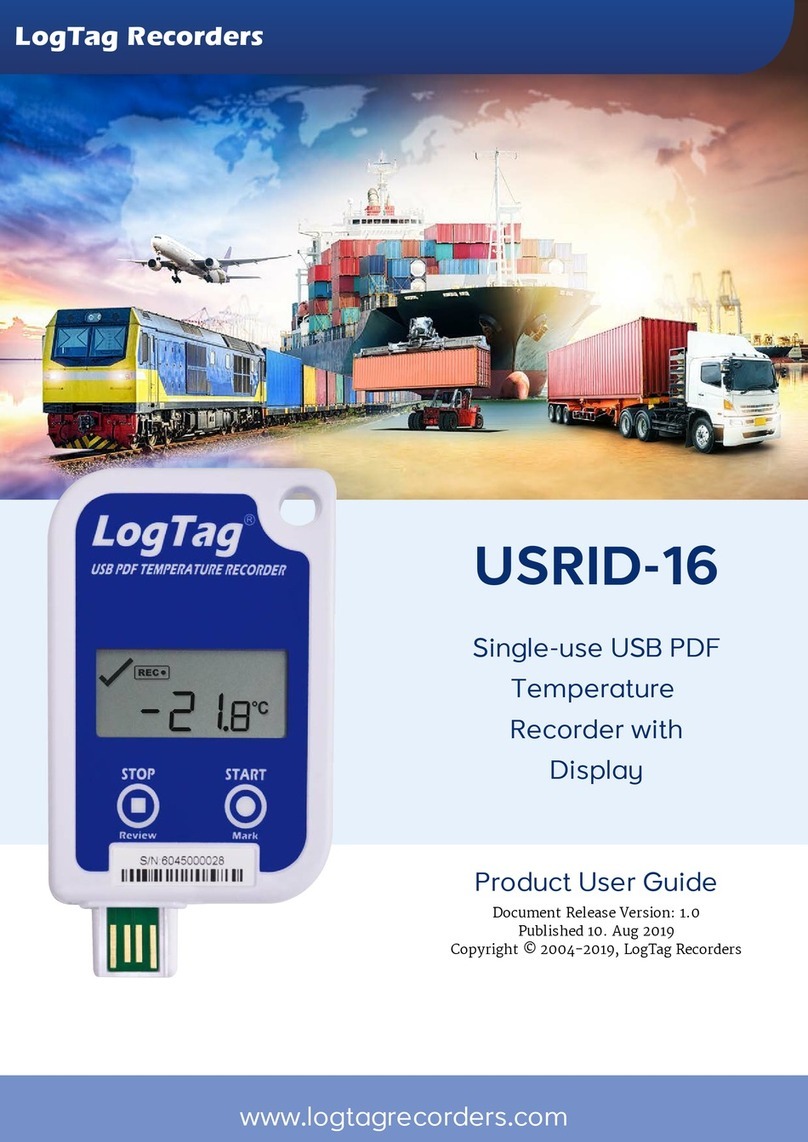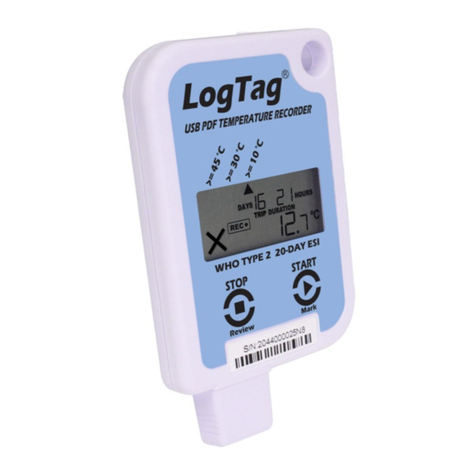
Display Overview
Figure 5: Display Overview with all segments turned on
Temperature
This 4 character, 7-segment display shows the last recorded
temperature while the TRED30-16R is recording . Once the recorder
has stopped, nothing will be displayed.
Temperature Units
Depending on the selected display temperature units during
configuration, this shows either °F or °C.
ALARM/OK indicator
The symbol is shown as soon as the TRED30-16R has registered an
alarm event. If no alarms have been registered, or if an existing alarm
has been cleared, the symbol is shown.
Alarm Threshold Markers
The up-arrow is shown when the temperature displayed (i.e. last
recorded) is above the specified upper temperature threshold. The
down-arrow is shown when the temperature displayed is below the
specified lower temperature threshold.
Recording state indicators
The recording state indicators show if the TRED30-16R is currently
recording data.
lIf the READY symbol is shown, the TRED30-16R is ready to be
started. Depending on the configuration it may already record pre-
start readings.
lIf the STARTING symbol is shown, the recorder has been
configured with a start delay. The word DELAY is also shown,
together with the time in hours and minutes until the start.
lIf the symbol is shown, the TRED30-16R is recording
temperatures at the sample interval defined during configuration
with LogTag® Analyzer.
lIf is shown together with the word PAUSED, the product is
also recording, but the recorded values are not taken into account
when calculating alarm events and durations.
lIf the word STOPPED is shown, the TRED30-16R has finished
recording temperature data.
Battery Low
A battery test is performed hourly. The battery low symbol will
appear if the TRED30-16R's battery is low and requires changing.
Please follow the instructions provided in Appendix 1 - Battery
Replacement on page 16. If the symbol is not shown while the display is
turned on, the battery is still OK.
Time Value and Time Indicators
The time value display is used to show one of the following:
la clock with the current time,
ltime remaining to start of logging with a delayed start or
lduration, for example of an alarm.
The time indicators identify, which of those is displayed:
lIf the word TIME is shown, the time value represents the current
time in hours and minutes (24- hour format).
lIf the word DELAY is shown, the time value represents a start
delay in hours and minutes.
lIf the word DURATION is shown, the time value represents the
length of time in hours and minutes an alarm threshold was
exceeded, for example the time above the upper alarm threshold.
The word dtstappears in place of a time value if the recorder is
configured for a date/time start, and the start time has not yet passed.
Reading Type
The word CURRENT is shown when the temperature on the display
represents the last recorded temperature.
The word MAX is shown in Review mode, when the temperature on
the display represents the maximum recorded temperature for the day
displayed.
The word MIN is shown in Review mode, when the temperature on the
display represents the minimum recorded temperature for the day
displayed.
Day Alarm Markers
This grid shows 3 rows of 10 markers, named Today ( ) to Day -29 (
), which are switched on when an alarm event occured on that day.
Day Number
During Review, this shows the day number of the currently displayed
day statistic. Today is 00DAYS, days in the past are represented
between yesterday -01DAYS and -29DAYS. During configuration of
the recorder in LogTag® Analyzer you can also enable this to show the
total number of days on which data were collected while recording.
Page 7 of 16 TRED30-16R Product User Guide, Revision 1.3, copyright © 2004-2016, LogTag®Recorders . All rights reserved.































